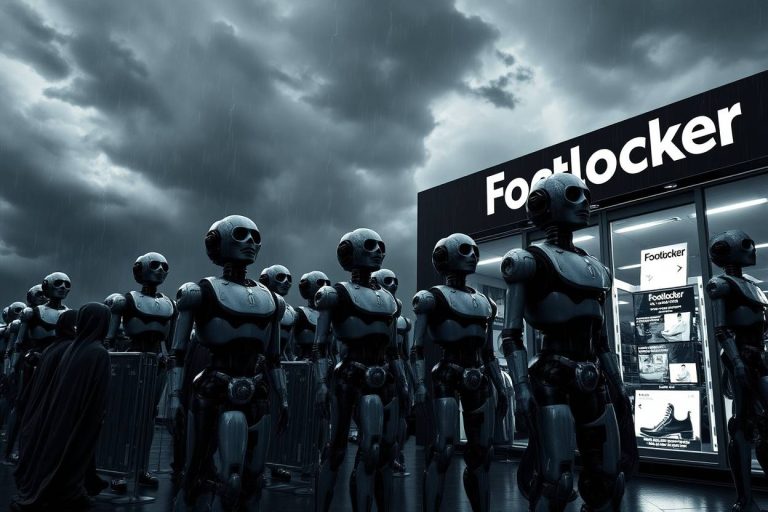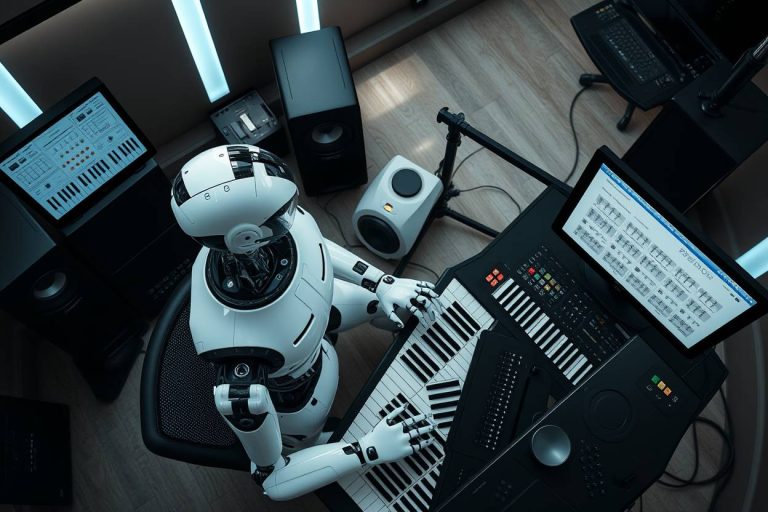How AI is Reshaping Traditional Brick-and-Mortar Businesses
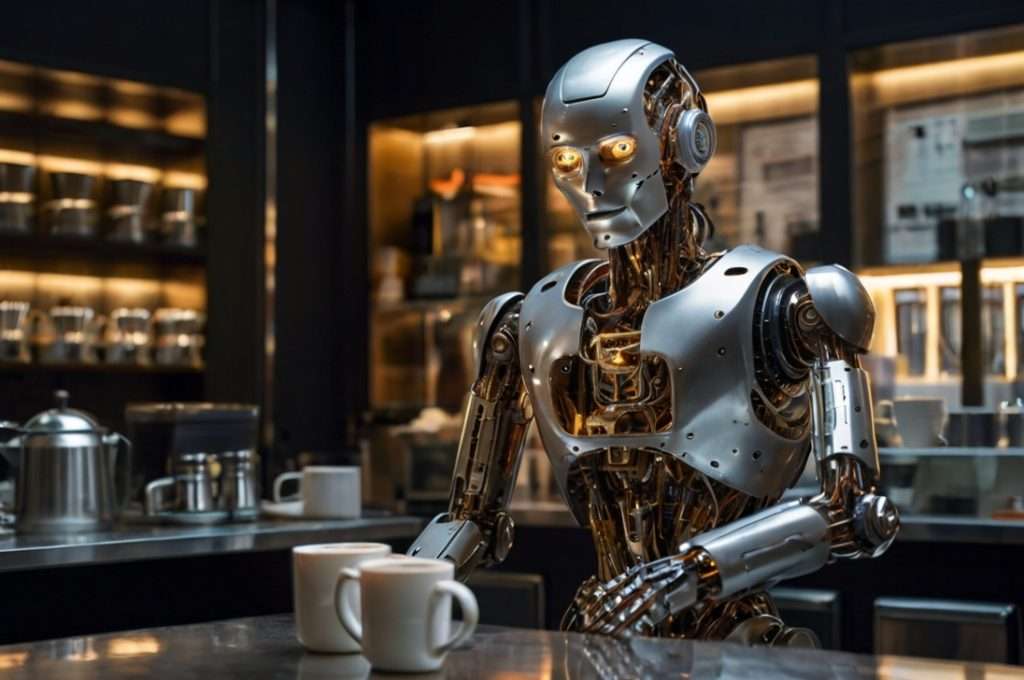
AI for traditional business is the application of intelligent technologies, such as machine learning and automation, to enhance the operations, efficiency, and customer experiences of physical, non-digital native companies. This involves using data-driven systems to improve everything from inventory management in a retail store to safety protocols on a construction site. By integrating AI, these established businesses can unlock new opportunities, streamline complex processes, and gain a competitive edge in a market that is increasingly digitally influenced.
Key Takeaways
- AI turns your data into smarter decisions. It analyzes information from sales and operations to optimize inventory, pricing, and project management.
- Automation fills critical labor gaps. AI-powered robotics are handling dangerous and repetitive jobs, improving safety and efficiency in industries like construction.
- Local marketing is now precise and accessible. AI provides powerful tools for a targeted SEO strategy, helping any business attract customers in their immediate area.
- The entire supply chain is getting an AI upgrade. From autonomous long-haul trucks on the highway to optimized last-mile delivery routes, AI is making logistics faster.
- AI augments your team, it doesn’t replace it. This technology handles routine work, freeing your employees to focus on customer service and strategy.
The core idea is to apply the analytical power once reserved for tech giants to the everyday challenges of traditional commerce. This allows a local restaurant to predict popular dishes based on weather patterns or a small construction firm to monitor site progress with automated drones. The goal is not to replace the human element but to augment it, allowing employees to focus on higher-value tasks while AI handles the repetitive, data-intensive work.
How is AI Optimizing Main Street Retail and Services?
AI is making a significant impact on Main Street by equipping retailers and service providers with tools to make smarter, faster, and more profitable decisions. It allows them to understand their customers and operations on a much deeper level.
What Insights Can AI Unlock from Point-of-Sale (POS) Data?
AI algorithms can analyze transactional data from a POS terminal to provide actionable business intelligence. This goes far beyond simple sales reports.
- Optimize Stock Levels: By analyzing sales data, AI can forecast demand with high accuracy. This predictive capability helps businesses reduce instances of both overstocking, which ties up capital, and stockouts, which lead to lost sales and dissatisfied customers.
- Smart Pricing: AI enables dynamic pricing strategies that can adjust based on real-time factors like local demand, competitor pricing, and even community events, helping businesses maximize revenue.
How is AI Enhancing the In-Store Customer Experience?
Beyond the checkout counter, AI is actively improving how customers interact with physical stores.
- Frictionless Checkout: Pioneered by companies like Amazon Go, computer vision technology allows customers to select items and leave the store without a traditional checkout process, with their accounts being billed automatically. This greatly reduces friction and wait times.
- Shelf Auditing Robots: Robots can autonomously patrol store aisles to scan shelves. They check for out-of-stock products, misplaced items, and incorrect pricing, ensuring that shelves are consistently well-maintained and ready for shoppers.
How is AI Building a More Efficient Construction Industry?
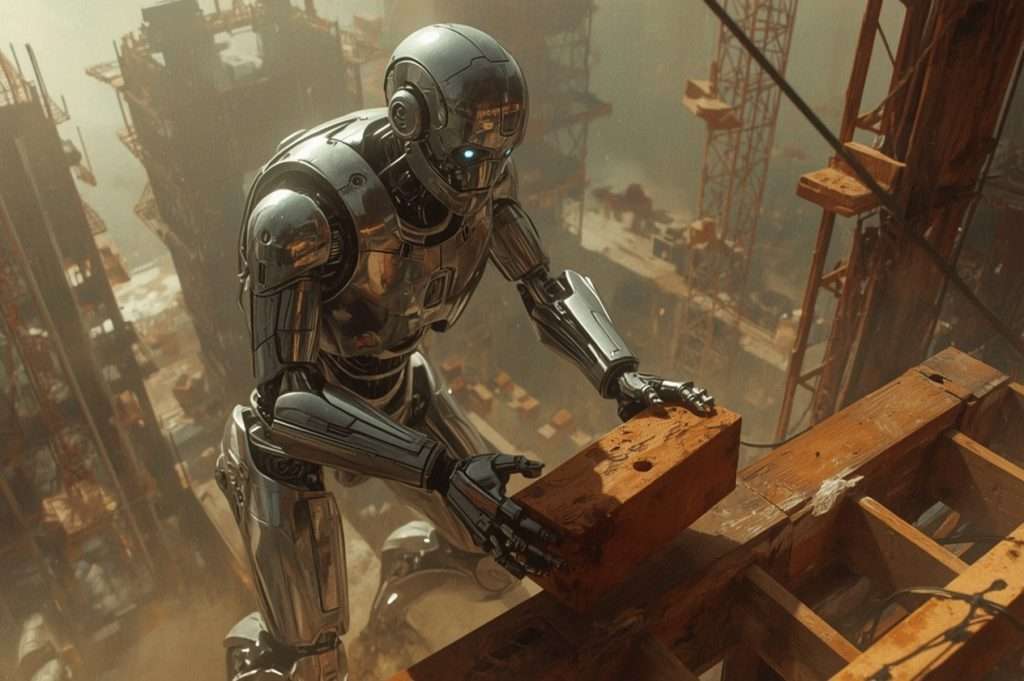
The construction sector, traditionally reliant on manual labor and established processes, is finding significant value in AI applications that improve both safety and productivity.
Can Robots and AI Address Critical Labor Shortages?
AI-powered robotics are beginning to fill crucial gaps in the construction workforce by taking on physically demanding and repetitive tasks.
- Automating Dangerous Jobs: Robotics are increasingly assigned to what are known as “dull, dirty, or dangerous” tasks. This includes automated bricklaying, transporting heavy materials across a job site, and even welding in hazardous conditions.
- Robotic Masons: Advanced robotic systems can lay bricks and apply mortar with remarkable precision and speed. This not only accelerates the building process but also lessens the physical strain on human masons, allowing them to oversee quality and handle more complex aspects of the job.
How Does AI Improve Project Management and Site Safety?
AI provides project managers with a new level of oversight, helping to keep projects on schedule and workers safe.
- AI-Powered Site Monitoring: Drones equipped with 3D vision and AI software can regularly survey construction sites. By comparing the real-time progress against digital blueprints, they can quickly identify discrepancies and help contractors address potential delays before they escalate.
- Large-Scale Automated Construction: A landmark demonstration of this potential occurred during a highway project in China, where a fleet of autonomous construction vehicles—including pavers and rollers—built a section of road guided by a central AI system. This project showcased the ability of AI automation in construction to operate continuously with high precision, dramatically accelerating the construction timeline with minimal human intervention on-site.
- Predictive Safety: AI algorithms can analyze data from various sources on a job site—including worker movements and equipment usage—to identify patterns that may indicate a heightened risk of accidents. This allows for proactive safety interventions.
How is AI Transforming Food Service and Hospitality?
From fast-food chains to local cafes, AI is being integrated to improve service speed, consistency, and operational workflow. As of 2024, studies show AI and automation are being leveraged to boost sales, enhance customer satisfaction, and improve efficiency in commercial kitchens.[1]
Are Robotic Baristas and Chefs the Future of Fast Service?
Automation is stepping into the kitchen and behind the counter to deliver consistent quality at a faster pace.
- The Rise of the Robot Barista: Some coffee shops have introduced robotic arms that can prepare a wide range of complex espresso drinks. These systems operate with perfect consistency 24/7, effectively reducing customer wait times and guaranteeing drink quality.
- Precision and Hygiene: In commercial kitchens, automated systems excel at tasks like sorting ingredients, assembling meals, and packaging finished products.
How Does AI Streamline Restaurant Operations Behind the Scenes?
AI’s impact extends beyond customer-facing roles to optimize the core functions of a restaurant.
- Reducing Food Waste: AI tools can analyze historical sales data and even incorporate external factors like weather forecasts to predict the demand for specific menu items. This helps chefs order ingredients with greater accuracy, significantly cutting down on spoilage.
- Smarter Food Safety: AI can be deployed to monitor critical food safety indicators, such as refrigeration temperatures and food handling procedures. According to the International Association for Food Protection, AI has the potential to strengthen food safety by predicting risks before they materialize.
How is AI Driving the Future of Logistics for Local Businesses?
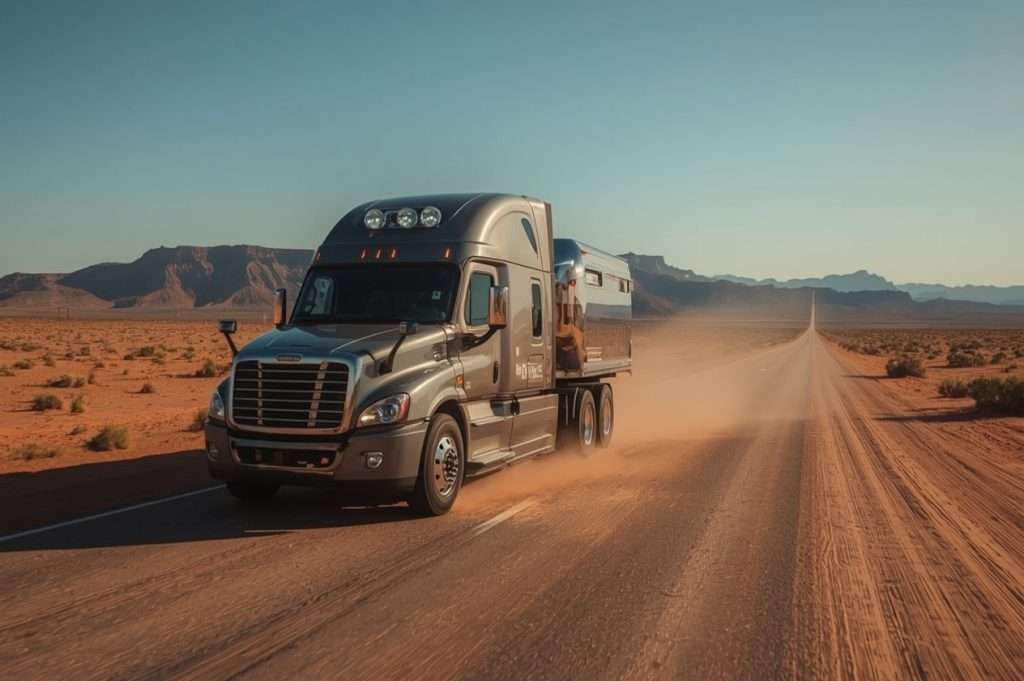
For any business that moves physical goods, AI for traditional business offers powerful tools to optimize delivery routes and manage fleets, making the “last mile” of delivery far more efficient.
Will Self-Driving Trucks and Drones Handle Local Deliveries?
The automation of local delivery is no longer a futuristic concept; it is being actively tested and deployed.
- Autonomous Pizza Delivery: In a notable real-world test, Domino’s has used drones for commercial pizza deliveries, demonstrating the viability of automated systems for last-mile service.
- Around-the-Clock Operation: A primary benefit of autonomous delivery vehicles is their capacity to operate 24/7. This allows for the creation of highly efficient, continuous local delivery networks that are not constrained by traditional work schedules.
How is AI Handling Long-Haul Logistics?
Autonomous technology is addressing some of the biggest challenges in long-haul trucking, creating a more efficient and resilient supply chain. While fully driverless trucks are still in development, AI is already making a significant impact on the highway.
- Real-World Highway Pilots: In Texas, companies like Aurora and Kodiak Robotics are actively operating autonomous trucks for commercial freight deliveries. These trucks are hauling goods for major partners, including FedEx and Werner, along key corridors like the I-45 between Dallas and Houston.
- The Hub-to-Hub Model: The current and most practical application is the “hub-to-hub” model. In this system, autonomous trucks handle the long, straightforward highway portions of the journey, operating 24/7 with high fuel efficiency. Human drivers then take over at designated transfer hubs on the outskirts of cities to navigate the complex final-mile delivery to the warehouse or store. This approach directly addresses the national shortage of long-haul drivers while keeping humans in control of the most nuanced part of the job.
How Does AI Optimize the “Last Mile”?
The final step of the delivery process is often the most complex and costly. AI addresses this challenge directly.
- Intelligent Route Planning: AI systems can process real-time data on traffic conditions, weather, and delivery schedules to calculate the most efficient routes for a fleet of vehicles. This dynamic rerouting saves time and fuel.
- Reducing Delivery Costs: Because the last mile can represent a substantial portion of total supply chain costs, the route and fuel efficiencies gained through AI-driven optimization offer a significant opportunity for cost savings.
How is AI Reshaping Marketing for Traditional Businesses?
AI is leveling the playing field, allowing traditional businesses to execute sophisticated marketing campaigns that were once the exclusive domain of large corporations with big budgets. It provides the tools to understand and reach local customers with unprecedented precision.
How Does AI Personalize Marketing for Local Customers?
AI systems can analyze customer data to create marketing messages that resonate on a local level, turning neighborhood businesses into community cornerstones.
- Hyper-Local Advertising: AI algorithms can process geographic and demographic data to run highly targeted digital ad campaigns. A local hardware store, for example, can use AI to automatically show ads for gardening supplies only to homeowners in specific neighborhoods right before a sunny weekend.
- Automated Content Creation: AI tools can generate relevant marketing copy for flyers, social media posts, and email newsletters. This allows a restaurant owner to quickly create engaging content about a new seasonal menu, tailored to the tastes of their local clientele, without needing a dedicated marketing team.
How Can AI Improve a Business’s Online Visibility?
For a traditional business, online visibility is the new storefront window. AI provides powerful methods to ensure local customers can find them easily.
- AI-Powered SEO Strategy: A successful SEO strategy is critical for attracting foot traffic. AI tools analyze local search trends to identify exactly what potential customers in the area are looking for. They can suggest blog topics, keywords, and website improvements that help a business rank higher in local search results and on platforms like Google Maps, directly guiding customers to their door.
- Automated Reputation Management: AI systems can constantly monitor online review sites like Yelp, Google, and TripAdvisor. They can analyze the sentiment of customer feedback, alert owners to pressing issues, and even draft professional, empathetic responses, helping maintain a positive public image with minimal effort.
What Are Common Misconceptions About AI for Traditional Businesses?
As with any significant technological shift, there are misunderstandings about what AI is and how it applies to established businesses.
Is AI Only for Large Corporations and Tech Giants?
One of the most persistent myths is that AI is too expensive and complex for smaller enterprises.
- Debunking the Myth: The growth of cloud computing and AI-as-a-service platforms has made powerful AI tools both affordable and scalable. This accessibility means that small and medium-sized businesses can now implement sophisticated AI solutions without massive upfront investment.
Does AI Eliminate the Need for Human Employees?
The fear that AI will replace human workers is widespread but largely unfounded. The goal of AI for traditional business is collaboration, not replacement.
- Augmenting, Not Replacing: AI systems are best suited for handling repetitive, data-heavy tasks. This frees up human employees to concentrate on roles that require creativity, critical thinking, and genuine customer interaction—skills that technology cannot replicate.
Conclusions
The true impact of AI for traditional business is not just in automating tasks but in providing a new layer of intelligence. For the first time, physical enterprises, from local shops to construction firms, can capture and analyze data from their physical environments with a level of detail previously available only to the digital world. This closes the gap between the physical and digital, allowing these established businesses to become more agile, efficient, and attuned to their customers’ needs. The defining question is no longer if AI will alter these sectors, but how quickly their leaders will adapt to harness its capabilities.


